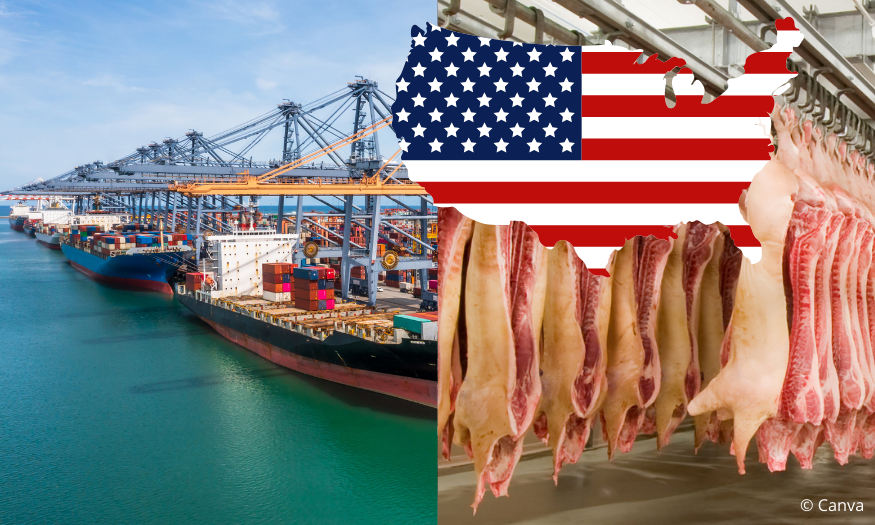On the trail of the dark universe with stats
Out of mountains of data from ESA’s new probe Euclid
A team from Innsbruck uses new statistical methods to obtain future information about dark matter and dark energy. At the earliest Euclid
By sending the first data back to Earth, there must be an instrument that provides new information on the most important questions about the unseen side of the universe.
|
Artistic rendering of the Euclid Space Telescope. [Groansicht] |
Gas nebulae, star clusters and majestic galaxies – this is how our universe appears in the eyes of modern space telescopes Hubble And James Webb. The universe appears to be dotted with a glowing structure. But what really makes up our universe remains invisible in these images. As astronomical measurements show, there is an unknown world hidden among all the stars, nebulae and galaxies. Known as the “dark universe”, this part of the universe is made up of two elements: dark matter and dark energy. Only these two elements, together with ordinary matter, produce the standard model of cosmology.
“This model is a very good description of the universe, because it can explain observations over a wide range of magnitudes and time scales,” says astrophysicist Leila Link from the University of Innsbruck. “We know that this model must contain dark matter and dark energy, but we don’t know what it is.” Dark matter provides additional gravity to hold galaxies and galaxy clusters together, which cannot exist without the mysterious matter. On the other hand, dark energy is driving the accelerating expansion of the universe, as measurements from distant supernova explosions show.
But beyond the two terms is completely open. Experts have proposed many theories about dark matter, such as hitherto unknown massive particles that barely interact with matter. Dark energy makes the universe rise like a cake. However, attempts to explain this excess pressure using Einstein’s “cosmological constant” have not yet been convincing: the value predicted in this way for dark energy is far from many orders of magnitude. Scientists around the world are searching for answers to the mysteries of the dark universe – a task whose importance cannot be overestimated, because calculations show that ordinary matter makes up only five percent of the total mass in the universe. So the lion’s share of the universe is dark.
ESA’s Euclid mission has set itself the goal of bringing light into the dark universe. But how could the probe, which was launched at the beginning of July this year, get close to the invisible observing targets? Linke explains: “It will be tangible Euclid “Measure the galaxies across about a third of the sky.” Euclid plans to capture an amazing view of 1.5 billion galaxies, some of them very far away. Euclid The data also provides information about the temporal evolution of the universe.
In order to unravel the secrets of the standard cosmological model, experts look primarily at the shapes of galaxies: As the Hubble images have impressively shown, no two galaxies are alike. However, systems can be classified according to how far they deviate from the circuit. “We’re talking about the elliptical,” Linke explains. So every galaxy is roughly egg-shaped. But there’s a catch: We can’t see what it really looks like from Earth, even with space telescopes. This is due to gravitational lensing: when light passes through a mass of matter on its way to us, it is deflected as the mass curves space, forcing light rays to take new paths.
This process has amazing consequences: galaxies that lie behind massive clusters of galaxies make wild arcs or are even photographed multiple times. Because almost every line of sight between extragalactic objects and Earth passes accumulations of mass, almost every image is distorted – sometimes even slightly.
But nothing about the dark universe can be learned from galaxy distortion alone: ”Galaxies can be elliptical in and of themselves. So we don’t see from individual samples how much is created by gravitational lensing,” Lencke explains. Therefore, the astrophysicist and her team evaluate several galaxies at the same time. “We measure the ellipticity of many neighboring galaxies,” Linke says. “If they are all randomly oriented, their intrinsic ellipticity decreases on average.” “So all that’s left is the part that goes back to gravitational lensing.”
If a group of galaxies is smeared in a common direction — experts speak of shear — this method is used to detect it. This allows us to say something about the distribution of mass in the universe — valuable information, Linke knows: “It allows us to understand two things: first, how structures in the universe formed. And second, we can learn from changes in the universe. Distribution of mass over the course of drawing inferences About the history of the expansion of the universe over time, which is determined by dark energy.
The mass distribution is a statistical variable relevant to cosmological data. Knowing each distance, we know how matter has accumulated or drifted away in the past. But in order to access distribution parameters, such as variance, experts have to work through mountains of data from such sensors Euclid He chooses. Link explains the previous method: “Starting with a galaxy, we compare the ellipticities of many pairs of galaxies at the same distance. This tells us, if there is a certain distortion at one point, how large is the shearing at another location. This information correlates with the variance of the mass distribution.”
However, since the cosmic mass distribution is not flashy but rather more complex, the variance is not sufficient to describe it. It needs more information. Instead of forming pairs, Linke grouped the galaxies into clusters of three. “This gives us a higher distribution moment that depends differently on the distribution parameters,” Linke says. “Together with the measurements on the pairs, we learn more about the mass distribution of the three groups.”
Although this statistical method allows for deep insights into the universe, it has been rarely used until now. The reason: To compare three galaxies to each other, giant galaxy catalogs require significant computing power — which was not available until recently. However, Linke was able to show that this problem can be addressed with graphics cards. In addition, practical algorithms were missing. This must change as part of Linke’s ESPRIT project, which is funded by the Austrian Science Fund FWF.
“Third-order statistics models are also more complex, and there are systemic effects that weren’t considered before. We simply have to do that now,” Linke adds. The astrophysicist and her team are still fine-tuning their methods. But once Euclid
By sending the first data back to Earth, the new instrument should be ready to obtain information about the unseen side of the universe from blocks of data.
|
|
|
|
|
|

“Social media evangelist. Baconaholic. Devoted reader. Twitter scholar. Avid coffee trailblazer.”









